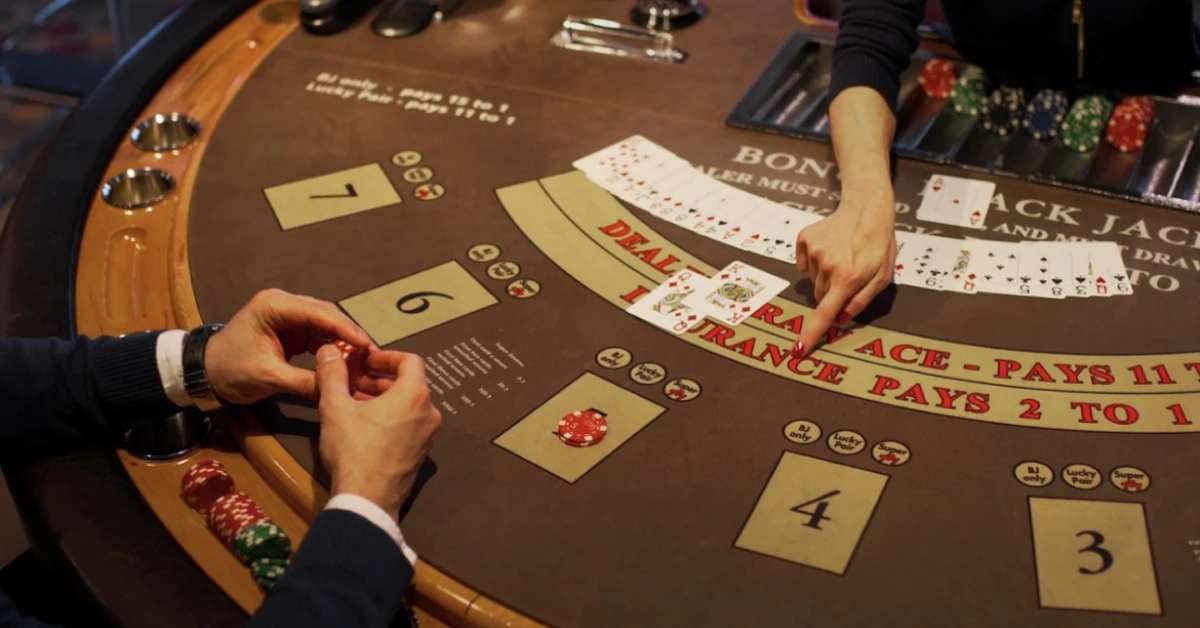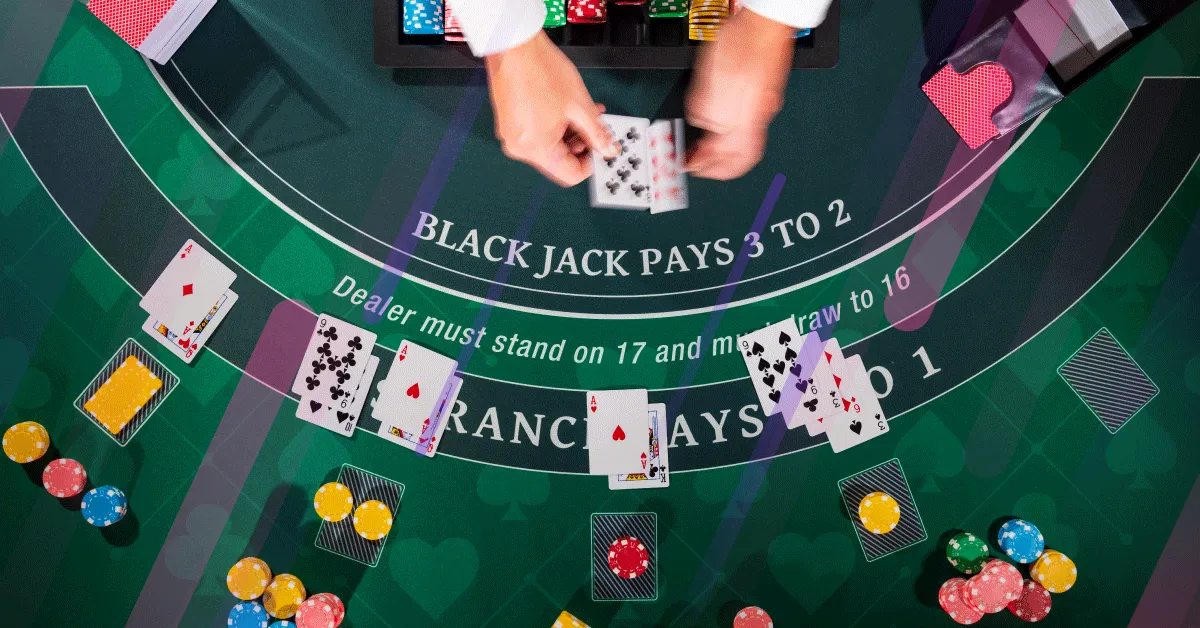Needless to say, mastering bridge bidding is crucial if you want to increase your chances of winning and outwit your opponents as well as become a reliable partner at the table. But what exactly is bridge bidding, and how can you master it?
That's what we're here to talk about today. We'll shine a light and explore what bridge bidding is and why it's vital. More importantly, we will learn the top tricks and techniques that can help you dominate the bidding war. Furthermore, we'll also take a look at the most popular bidding systems, the key objectives during the bidding phase, and how to develop a disciplined, winning approach to this intricate part of the game. So are you ready to emerge victorious in bridge? Then let's get right down to it.
What is bridge bidding?
Bridge bidding is the process through which players communicate with their partners to determine the best contract – the number of tricks one side believes it can take and with which suit as trump (or no trump). This is important because, after all, bridge is all about communication and logic. Each player, in clockwise order, takes turns making calls: bids and passes as well as doubles or redoubles. The goal is to arrive at the best possible contract based on the combined strength of both players' hands.
Unlike casual games where players may speak openly, bridge bidding is governed by a strict and silent language of standardized bids. In short, the partners must rely on logic, memorization, and mutual understanding, as the game forbids overt communication! The challenge – and beauty – of bridge lies in this coded dialogue.
The bidding phase will end after three consecutive passes, and the final bid determines the contract and the declarer. From there, the play begins – but more often than not, the seeds of victory or defeat have already been sown during the auction itself.
Remember:
Mastering card play is essential – even more so than bidding, especially for beginners. Since bidding involves anticipating how the cards will play out, strong card play skills are vital for making smart bids and winning contracts effectively.
The main goals of bidding in bridge
You may have already heard of the two primary factors that determine how many tricks your partner and you can take in terms of card play. The main goal of bidding in bridge is to reach the best possible contract - one that gives you and your partner the highest chance of scoring well based on the cards you hold. But what determines a “good” contract? It all comes down to two key factors: Strength and Shape.
Strength
Strength will refer to the number of high-ranking cards in your hand - cards that are likely to win tricks. These include Aces, Kings, and to an extent, Queens, Jacks, and even 10s and 9s in some cases.
To help evaluate strength, especially for beginners, we use High Card Points or HCP. This system assigns values to the top cards as follows:
Ace = 4 points
King = 3 points
Queen = 2 points
Jack = 1 point
Although this is the standard, keep in mind that Aces and Kings often play better than their point value suggests, while Queens and Jacks might be slightly overvalued. Additionally, 10s and 9s - especially in long suits - can be very useful, even if they don't carry official point values.
There are 40 HCP in a full deck: 10 in each suit (A + K + Q + J = 4 + 3 + 2 + 1). Since there are four players, the average hand will contain about 10 HCP.
Shape
Shape, on the other hand, refers to the distribution of suits in your hand - and more importantly, how your hand fits with your partner's. In most cases, the most vital aspect of shape is the number of combined trumps the partnership holds in a suit.
Aside from this, there are several other shape-related factors which can influence bidding success:
Short suits (singleton or void) in one hand when the other hand has trump support
Long side suits that can be developed for extra tricks
Two suits that fit well together
Whether the hands are balanced, highly unbalanced, or mirror images
When you understand both strength and shape in bridge, you can more effectively evaluate how many tricks your side can expect to win - and therefore what contract you should aim for in the bidding phase.
There are other goals in bridge bidding, to be sure. In order to master bridge bidding, it's essential for you to understand the other primary goals of this phase:
-
Find a fit
One of the most critical goals in bridge bidding is to find a "fit" – a suit where you and your partner hold at least eight cards combined. Major suits (hearts or spades) are typically preferred due to their higher scoring potential, while no-trump contracts can work well with balanced hands.
-
Determine the level of the contract
Bidders must estimate how many tricks their partnership can win. Overbidding risks penalties, while underbidding may give up potential points. Aim for precision and balance.
-
Establish the trump suit or no-trump
Decide whether the hand should be played in a specific suit as trump or in no-trump, where no suit has superiority. This choice shapes how the hand is played.
-
Communicate hand strength
Bids should relay valuable information about high card points (HCP), suit distribution, and preferences. Effective communication helps your partner judge whether to raise, pass, or shift strategies.
-
Disrupt the opponents
Strategic bidding can also block or confuse the opposing team's communication, preventing them from reaching their ideal contract.
Mastering bridge bidding means juggling multiple objectives at once - finding a fit, gauging the right level, choosing trump or no-trump, sharing key hand information, and sometimes disrupting the opponents' plans. These goals work together to help you and your partner land in the best possible contract – and set the stage for successful play.
Remember:
Mastering card play is essential – even more so than bidding, especially for beginners. Since bidding involves anticipating how the cards will play out, strong card play skills are vital for making smart bids and winning contracts effectively.
Popular bidding systems: a snapshot
Now that we have explained the importance of establishing the right goals and objectives in the bidding phase, we move on to the next step: choosing a bidding system.

There are several widely used bidding systems in bridge, each with its own set of conventions and styles. Here's a look at the most popular ones:
-
Standard American (5-card majors)
This is one of the most commonly taught systems in North America. It uses a natural bidding approach, meaning bids closely reflect the suits and points held. A key feature is that an opening bid of one in a major (hearts or spades) promises at least five cards in that suit.
-
ACOL
Popular in the UK and parts of Europe, ACOL uses a 4-card major opening and emphasizes a more flexible, balanced approach to bidding. It also generally requires fewer points to open.
-
Precision Club (or Basic Precision)
This is a strong club system where a 1♣ opening bid promises 16 or more HCP, regardless of distribution. It aims for early hand definition and tends to favor aggressive but accurate bidding. It's relatively natural and easy to learn, but less commonly used – so finding a compatible partner may be a challenge.
-
Two-over-One Game Force (2/1)
This system is an extension of Standard American. A two-level response in a new suit is game-forcing, showing at least 13 points and a desire to reach game. It is arguably the most popular modern system.
-
Polish Club
The Polish Club is an advanced system similar to Precision. A 1♣ opening may indicate one of three distinct hand types: a weak 11–13 balanced hand, a strong 18+ hand, or a solid hand with long clubs around 16+. This variability makes it harder for opponents to disrupt bidding but requires precise follow-ups and strong partnership understanding. It's a powerful system for experienced and focused players.
Each of these systems can be successful when partners are on the same page. Choosing a system depends on partnership preference, playing style, and consistency.
Selecting the right bidding system is a key part of developing your bridge strategy and improving partnership communication. The thing to remember is that your choice should reflect your goals, playing style, and the level of detail you and your partner are comfortable with. While some systems offer greater clarity or defensive challenges for opponents, others provide simplicity and ease of use. At the end of the day, the best bidding system is one that both partners understand well and can use confidently. Mastery of any system takes time and teamwork – but with the right foundation, it becomes a powerful tool for success at the bridge table.
Top techniques to win the bidding war
Mastering bridge bidding isn't just about memorizing responses – it requires disciplined thinking and strategic insight. And as mentioned before, it depends on a strong sense of communication. That said, following are the top tricks and techniques that can help you dominate the bidding phase:
-
Memorize the point count system
Understanding how to evaluate your hand is essential. The High Card Point (HCP) system is the most common:
- Ace = 4 points
- King = 3 points
- Queen = 2 points
- Jack = 1 point
This helps assess when to open the bidding (usually 12+ HCP). Also consider distributional values – long suits, singletons, and voids add extra playing strength.
-
Open with discipline
The opening bids set the tone of the auction. Stick to the rules of your system. In Standard American, for example:
- 13+ points to open one of a suit
- A 5-card major to open one heart or one spade
- A balanced hand and 15–17 HCP to open 1NT
Consistent, disciplined opening builds trust with your partner.
-
Use conventions wisely
Conventions are pre-agreed, non-natural bids that carry specific meanings. Common ones include:
- Stayman: After 1NT, checks for a 4-card major
- Jacoby transfers: Show a long suit, let partner declare
- Blackwood: Asks for aces or key cards for slam evaluation
- Gerber: Ace-asking after NT openings
- Negative doubles: Show unbid suits or strength
Stick to conventions you've agreed upon and understand well.
-
Learn forcing vs. non-forcing bids
Some bids require partner response (forcing), others allow passing (non-forcing):
- A new suit by responder is forcing
- Raising partner's suit is generally non-forcing – unless it's stronger or at higher level
Knowing which is which helps manage the flow of the auction effectively.
-
Rebid with purpose
Rebids define your hand. After your partner responds, use your second bid to clarify your distribution and strength:
- Repeat your suit = 6+ cards in that suit, limited strength
- New suit = 5–4 or 4–5 distribution
- Jump rebid = strong hand, slam or game interest
Don't just bid to stay in the game – guide your partner with intent.
-
Practice competitive bidding
Opponents will interfere – be ready:
- Overcalls: Show a decent suit and strength (8–16 points)
- Takeout doubles: Ask partner to bid an unbid suit
- Preempts: Disrupt opponents with long, weak suits
Well-timed interference can disrupt your opponents' auction and gain you the contract.
-
Plan the auction together
Strong partnerships align before the game. Discuss your agreements: whether to use Blackwood or Gerber, acceptable ranges for 1NT openings, and meanings of less common bids. Clarity before play leads to confidence at the table.
Point to ponder:
Consider using convention cards to outline your bidding system. They help prevent miscommunication and keep your partnership aligned.
Contract Bidding Goals in Action
Winning the bidding war isn't about making the highest bid – it's about bidding intelligently. You should always keep these goals in mind:
-
Find the best game
Game contracts (3NT, 4♥, 4♠, or 5♣/♦) offer large bonuses. A key objective of bidding is to reach one of these when you and your partner have a combined 25+ points.
-
Stop at a safe level
If you don’t have enough strength for a game, it's often wiser to stop lower. Contracts like 1NT, 2 of a suit, or 3 in a minor can still yield positive scores or reduce losses.
-
Explore slam possibilities
With 33+ points or strong distribution, your partnership may be positioned for a small slam (6-level) or even a grand slam (7-level). Tools like Blackwood can help evaluate these opportunities.
-
Avoid getting doubled
Overambitious or reckless bidding may lead to penalties if opponents double you. Always assess the risk, especially when vulnerable, before committing to higher-level contracts.
Develop – and strengthen – your bidding intuition
While systems and point counts are important, experience teaches bridge bidding intuition – a certain feel for when to stretch a bid, when to stop a bid, and how to interpret subtle signs from your partner or opponents. Here are some unbelievably effective ways to sharpen that skill:
- Review past hands: You should make it a point to analyze auctions after the game
- Play online: There are numerous platforms like BBO (Bridge Base Online) that offer practice and replay
- Read bridge literature: Also, don't underestimate the power of the written word. Books by bridge masters like Mike Lawrence, Barbara Seagram, and Larry Cohen may offer invaluable insights
- Watch tournament play: When you see experts in action, this reinforces advanced techniques
The bridge to victory starts at the auction
As we all can readily attest, bridge is a game of strategy, communication, and skill - and nowhere is that more apparent than in the bidding phase. Imagine it: every call you make shapes the path ahead for you – whether you end up as declarer, a defender, or a partner to a winning contract. By mastering the fundamentals of bridge bidding and learning your system inside and out, you can set yourself up not just to play bridge but to play it at a high level.

Bidding is, at its core, a language. So it takes time to learn the grammar, understand the nuance, and really appreciate the artistry behind it. But once you do learn the ins and outs of bridge bidding, the game opens up in extraordinary ways. Then, there's nothing left to do but choose the right partner, refine your bids, and start winning the auction – because in bridge, the battle is often won before the cards even hit the table.
FAQs on Bridge Bidding
-
What is the main purpose of bidding in bridge?
The primary goal of bidding is for partners to communicate information about their hands in order to reach the best possible contract. Bidding helps determine how many tricks the partnership can take and whether the contract should be played in a suit or in no-trump. It also gives opponents clues about whether to compete or defend.
-
What does it mean to have a "fit" in bridge bidding?
A "fit" refers to a suit where both partners have enough cards – usually at least eight combined – to consider naming that suit as trump. A major suit fit (spades or hearts) is especially valuable since it offers higher scoring opportunities than minor suits or no-trump contracts.
-
What is a bidding system, and why should I use one?
A bidding system is a predefined set of agreements and conventions partners use to interpret each other's bids. It helps eliminate confusion and ensures both players speak the same “language”. Common systems include Standard American, Acol, Precision, and 2/1 Game Force.
-
How many points do I need to open the bidding?
Most systems require around 12+ high card points (HCP) to open at the one-level. Some allow lighter openings with fewer points if supported by distributional strength. Always consider both point count and shape before deciding to open.









































